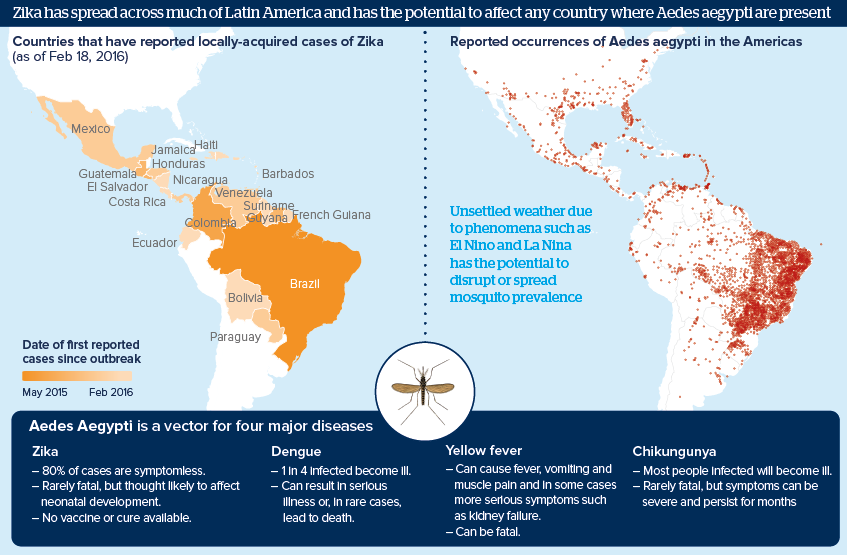Latin America Zika fear may spur mosquito wipeout
The Aedes aegypti mosquito has brought multiple dangers to Latin America but Zika has grabbed the world's attention

Source: Mosquito image counrtsey of Wellcome Library, London (modified)
Outlook
While education campaigns and efforts to remove mosquito breeding grounds will go some way to reducing the Zika risk in certain areas, the virus will continue its rapid spread throughout Latin America -- particularly in regions that are approaching the rainy season -- and is highly likely to spread into the southern United States in the near future.
The Aedes aegypti mosquito already posed the threat of dengue, yellow fever and chikungunya, but Zika's reputation for harming unborn babies feeds into humans' worst fears and attracts heavy media attention. That attention could become damaging for affected tourist-reliant economies. However it could also drive efforts to eradicate the Aedes aegypti; a challenge which, though difficult, (the vector was eliminated across much of the continent in the 1960s but it returned) would bring multiple health benefits.
Impacts
- The suspected causal links between Zika and microcephaly and Guillain-Barre syndrome may be proven in the coming weeks.
- Until such links are proven, speculation will rise about other possible causes, such as pesticides.
- El Nino and La Nina will increase the difficulty of predicting where mosquito numbers will boom.
- With a vaccine a distant prospect, genetically modified mosquitos could be key to tackling the Aedes aegypti and its associated illnesses.